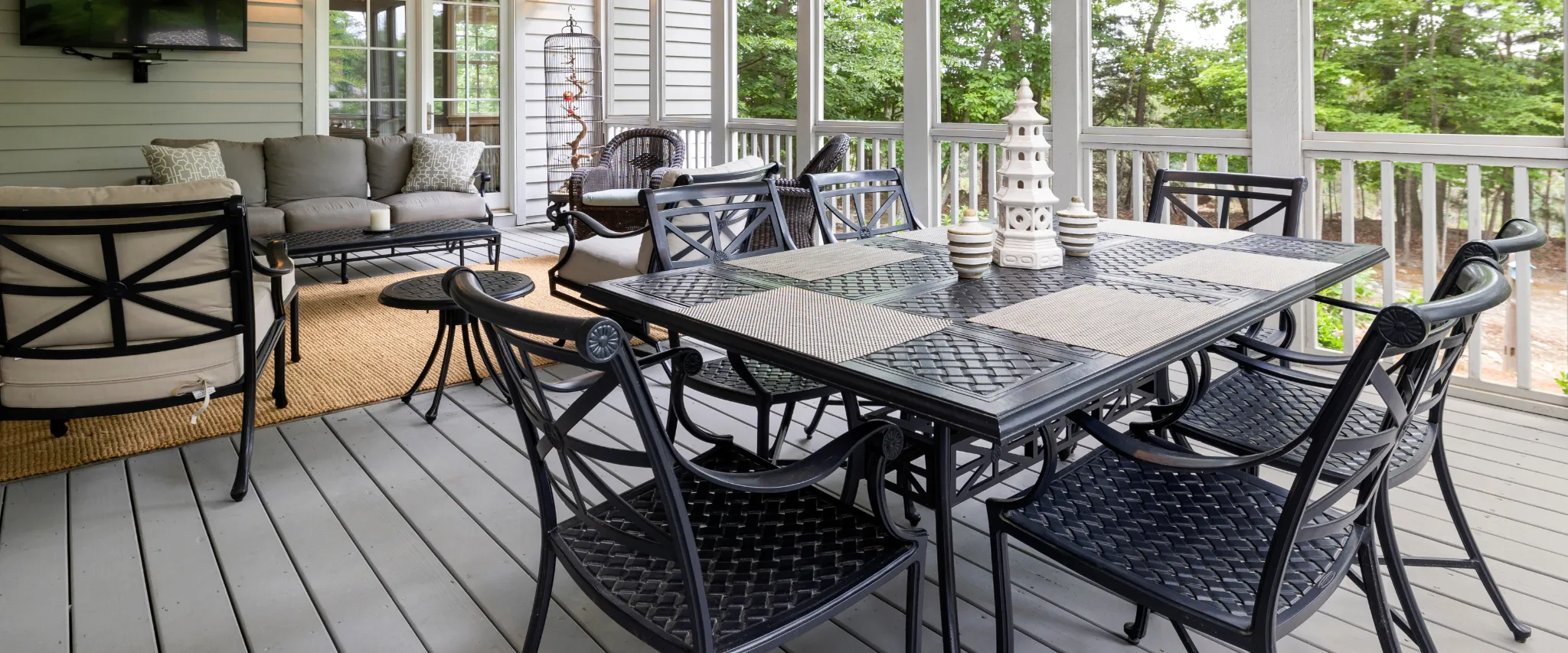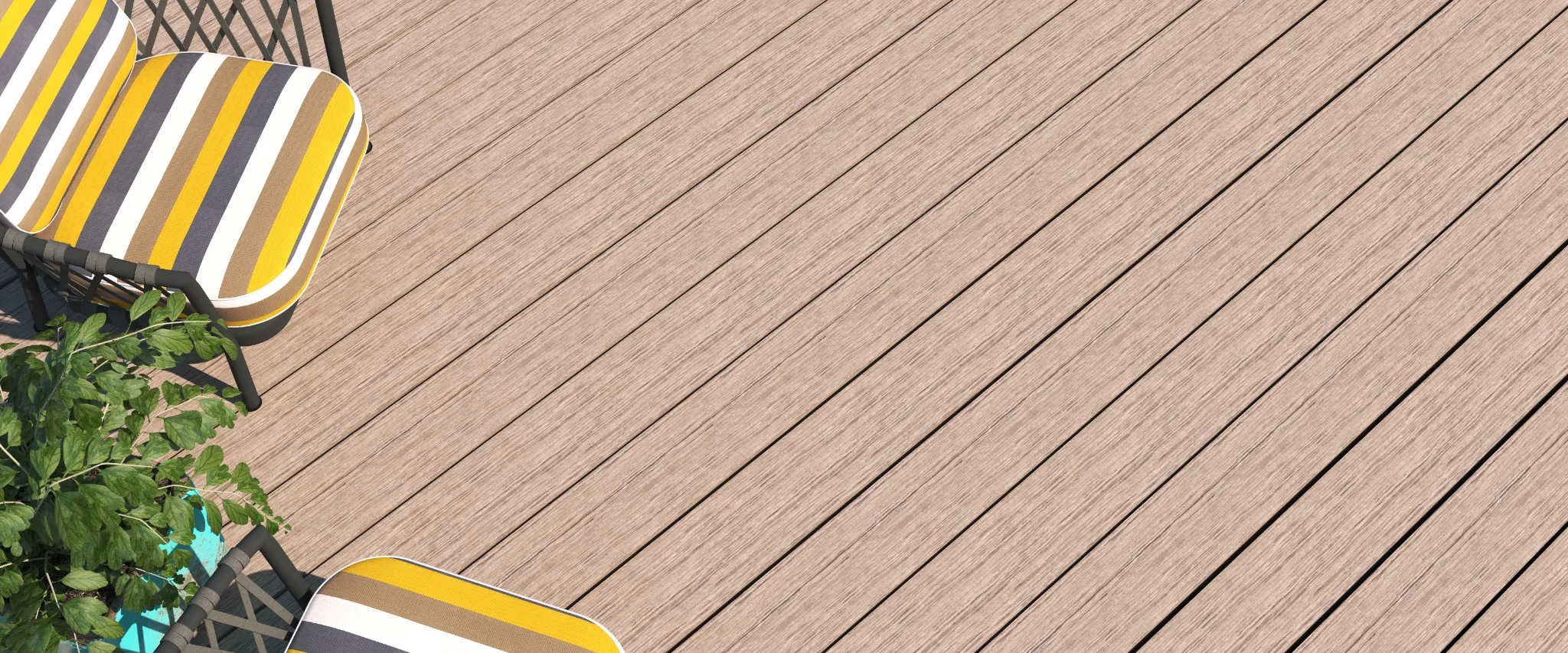Pros and Cons of Staining a Deck
Staining a deck is one of the most popular ways to maintain and enhance its look, but like any home improvement project, it comes with its pros and cons. If you’re wondering whether staining your deck is the right choice, this guide breaks it all down in simple terms.
From protecting your wood deck to showcasing its natural beauty, let’s take a closer look at the benefits and drawbacks of deck staining.

The Benefits of Staining Your Deck
Staining your deck has plenty of advantages, making it a go-to option for many homeowners. Here’s why so many people choose deck stains over other methods like painting:
1. Enhances the Natural Beauty of Wood
2. Protection Against UV Rays
3. Prevents Water Damage
4. Easy to Apply and Touch Up
5. Variety of Options
There are different types of stains to suit your preferences:
- Transparent stains: Perfect for highlighting the wood’s natural beauty.
- Semi transparent stains: Provide a bit of color while still showcasing the wood grain.
- Solid stains: Offer more coverage, hiding imperfections while giving the deck a uniform look.
The Drawbacks of Staining Your Deck
1. Needs Regular Maintenance
2. Limited Durability
3. Doesn’t Cover Imperfections
4. Requires Proper Preparation

Stain vs. Paint: What’s the Difference?
Choosing between a deck stain and deck paint can be tricky. Here’s a quick comparison to help you decide:
- Deck Stain: Enhances the wood’s natural beauty and grain. Available in transparent, semi transparent, and solid stains. Easier to apply but requires more frequent maintenance.
- Deck Paint: Provides a thicker, more durable coating. Covers imperfections and lasts longer, but it hides the wood grain and natural beauty.
When Should You Stain Your Deck?
The timing of staining your deck plays a big role in how well the stain performs. Here are some tips for the best results:
- New Decks: Wait a few months before staining to allow the wood to dry and settle. Pressure-treated wood especially needs time to cure.
- Weather: Choose a dry day with mild temperatures to ensure the stain dries evenly.
- After Cleaning: Make sure your deck is clean and dry before applying the stain. This helps the stain adhere properly to the wood surface.
The Role of Solid Stains

How to Stain Your Deck
Staining your deck doesn’t have to be complicated. Follow these simple steps for a beautiful, long-lasting finish:
- Clean the Deck: Remove dirt, mildew, and old stain using a deck cleaner. Let the deck dry completely.
- Sand the Surface: Lightly sand the wood to ensure the stain adheres evenly.
- Choose the Right Stain: Decide between transparent, semi transparent, or solid stains based on your preferences and the condition of your deck.
- Apply the Stain: Use a brush, roller, or sprayer to apply an even coat. Work in small sections to avoid streaks.
- Let It Dry: Allow the stain to dry completely before using the deck.
Pros of Staining Over Painting
- Preserves the Wood Grain: Unlike paint, stains let the natural wood grain shine through.
- Easy Touch-Ups: Stains are easier to reapply compared to paint, which might require sanding or stripping.
- Fewer Cracks and Peeling: Stains penetrate the wood instead of sitting on top, reducing the risk of cracking or peeling.
Cons of Staining Over Painting
- Shorter Lifespan: Stains don’t last as long as deck paint, especially in high-traffic areas.
- Less Coverage: Stains might not hide flaws as effectively as paint.
Staining Tips for Wooden Decks
- Pick the Right Type: Semi transparent stains are great for showcasing natural wood, while solid stains provide more coverage.
- Apply in Thin Coats: Avoid thick layers to prevent streaks or uneven drying.
- Seal the Edges: Don’t forget to stain the edges and undersides of your wooden deck to protect it from moisture.
Is Staining a Wooden Deck Worth It?
Maintaining a Stained Deck
To keep your stained deck looking great, follow these maintenance tips:
- Clean Regularly: Sweep away dirt and debris to prevent buildup.
- Touch Up as Needed: Reapply stain to high-traffic areas that fade over time.
- Inspect for Damage: Check for cracks, rot, or other issues that may need repair.

FAQ: Pros and Cons of Staining a Deck
Typically, you should re-stain your deck every 1-3 years, depending on the stain type and weather exposure.
No, new decks, especially those made of pressure-treated wood, should dry and settle for a few months before staining.
Stain enhances the wood grain and penetrates the surface, while paint provides a solid coating that hides the wood’s natural beauty.
It depends on your goal. Transparent or semi-transparent stains highlight the wood’s natural beauty, while solid stains offer more coverage and hide imperfections.
Conclusion: Should You Stain Your Deck?
The decision to stain your deck comes down to your personal preferences and how much maintenance you’re willing to do. If you love the natural beauty of wood and don’t mind reapplying stain every few years, deck staining is a fantastic option. It protects your wood deck from UV rays and water damage while showcasing the wood grain.
Don’t want to deal with the hassle or risk making mistakes? Let the experts handle it! Contact Deck Bros today at (402) 369-5724, and check out our deck building page to see how we can make your deck look its absolute best – without the stress.
